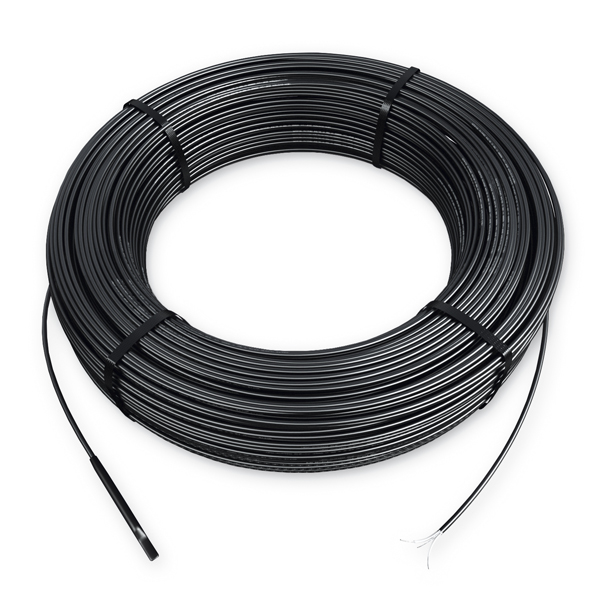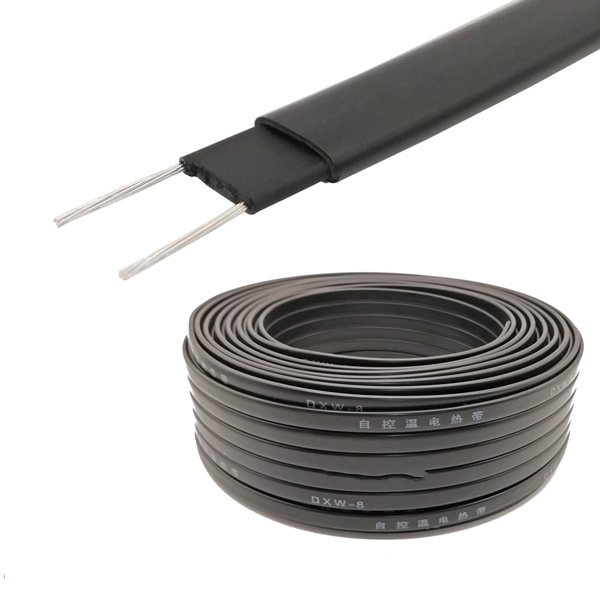
For cables with lengths greater than 50 feet, you may pay $0.50 to $1.50 per foot for a basic cable. Inexpensive: Inexpensive heat cables that have only basic features may cost $1 to $2 per foot for cables of less than 50 feet in length. With a lengthy cold lead you pay a little more, but you also potentially avoid the extra cost of an extension cable. To further compare products, pay attention to the length of the cold lead. This allows you to fairly compare prices of an 80-foot cable with a 90-foot cable. To simplify comparisons, calculate the cost of each cable per foot. Heat cables for roofs and gutters have widely varying price points, primarily depending on the length of the cable. If the manufacturer doesn’t list the product’s watts per foot rating in the specifications, you can calculate this number if you know the total length and total watts the cable carries. However, cables that have a higher watts per foot rating use more electrical power, generating higher costs. For tougher ice situations, some deicing cables may carry 10 or more watts per foot. A cable with five to seven watts per foot is average and suits the majority of homeowners. The number of watts per foot that a heat cable generates provides information on its heating power. Be careful about using this type of material to deice your gutters in locations where temperatures can be extremely low.
#Heat cable full#
However, pipe heat tape is made for use in crawl spaces where it’s not exposed to the full winter elements.
#Heat cable crack#
If the heat cable’s insulation layer may crack in low temperatures, it is not safe for you to use.įor example, some pipe heating cables may market themselves as gutter deicing cables, too. An inexpensive heat cable that doesn’t offer water protection is not safe to use.įinally, check the rating for the cable in extremely low temperatures. Some heat cables may not be safe to use with certain materials, so you need to know the materials used in your roof, gutters, and downspouts.Īdditionally, all heat cables should be waterproof. These work fine, but it’s your responsibility to unplug the cable when temperatures warm and plug it back in when freezing temperatures return. Instead, you plug in the cable when you want it to operate and unplug it when you want to stop passing heat through it. Less expensive cables do not have automatic on/off switch sensors. With automatic sensors, you can leave the cable plugged in all the time and forget about it. This saves money, as it only draws power when there’s the potential of ice in the area. With these sensors in place, the heat cable turns itself off and on as needed. These measure the temperature and moisture in the area.
#Heat cable series#
Features Automatic sensorsĪ heat cable for gutters may have a series of sensors built into it. The cold lead may be as short as a few inches or as long as 10 feet. The cold lead is the section you plug into an outlet it doesn’t have any heating element. Deicing cables often have a section called a cold lead that attaches to the heated portion of the cable. When calculating how much cable length you need, pay attention to the length of the portion of cable with the heating element inside it. You cannot perform a proper installation with a cable that’s too short for the job. Without proper installation, the cable does not melt ice and snow properly. Purchase as much cable as you calculate you need - don’t try to save money by buying a shorter cable and hoping it does the trick. Heat cables can be as short as three feet and as long as 250 feet. These cables are not meant to be cut to size, so you want to purchase the length that’s closest to what you need.

The primary consideration with heat cables is the length of the cable. Other names for heat cables for gutters include deicing cables, heated gutters, roof heat cables, and heat tape.

We can help you find a heat cable that meets the needs of your home. If you live in an area with snow and ice in the wintertime, investing in a heat cable now can save you costly repairs in the future.

The heat cable prevents ice from forming, allowing the melting snow and ice to find a runoff path into the downspout and away from your home. Fortunately, you can reduce some of the issues associated with ice dams by using heat cables on roofs and gutters. An ice dam may form on your roof when temperatures bounce back and forth from above freezing to below freezing.Īs the ice dam forms, it may be hidden under a pile of snow, so you cannot see the damage it’s causing. One of the most dangerous situations is one that you can’t easily see: an ice dam. Winter weather is tough on your home, too. From dangerously icy sidewalks to salted roads when driving in snow, winter is a common time for injuries and damage to vehicles. Harsh winter conditions can be tough on people and pets. Buying guide for best roof and gutter heat cables


 0 kommentar(er)
0 kommentar(er)
